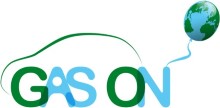
Starting from state of the art harvesting scenarios and guidelines definition in WP1, the proposal is based on 3 parallel technology ways that will lead to a full development of demonstrator vehicles, all based on the integration of the gaseous direct injection (DI) system developed and focusing on the DI combination with the advanced VVA system (WP2), on advanced boosting system combined with VCR (WP3) and addressing lean burn and/or charge dilution combustion approach and exhaust gas temperature control (WP4). More innovative combustion approaches are part of WP5, where an ignition chamber concept with extended lean burn and diesel like compression ratio will be developed. This will be supported by an ignition system, able to comply with extended lean burn gas engines. WP5 also includes a full development of a gas quality / composition sensor that will be also beneficial to the entire consortium, to determine the fuel characteristics and enable a predictive engine control parameters optimization. WP6 will support the different combustion approaches with the full development of the after-treatment technologies able to increase methane conversion at very low temperature and to support also lean burn approach, considering also the potential coming from the DI systems to control the exhaust gas temperature. The results obtained from the experimental activities on the demonstration vehicles and engines will be harmonized and analyzed in WP7 where the overall assessment of the different approaches will be made.
